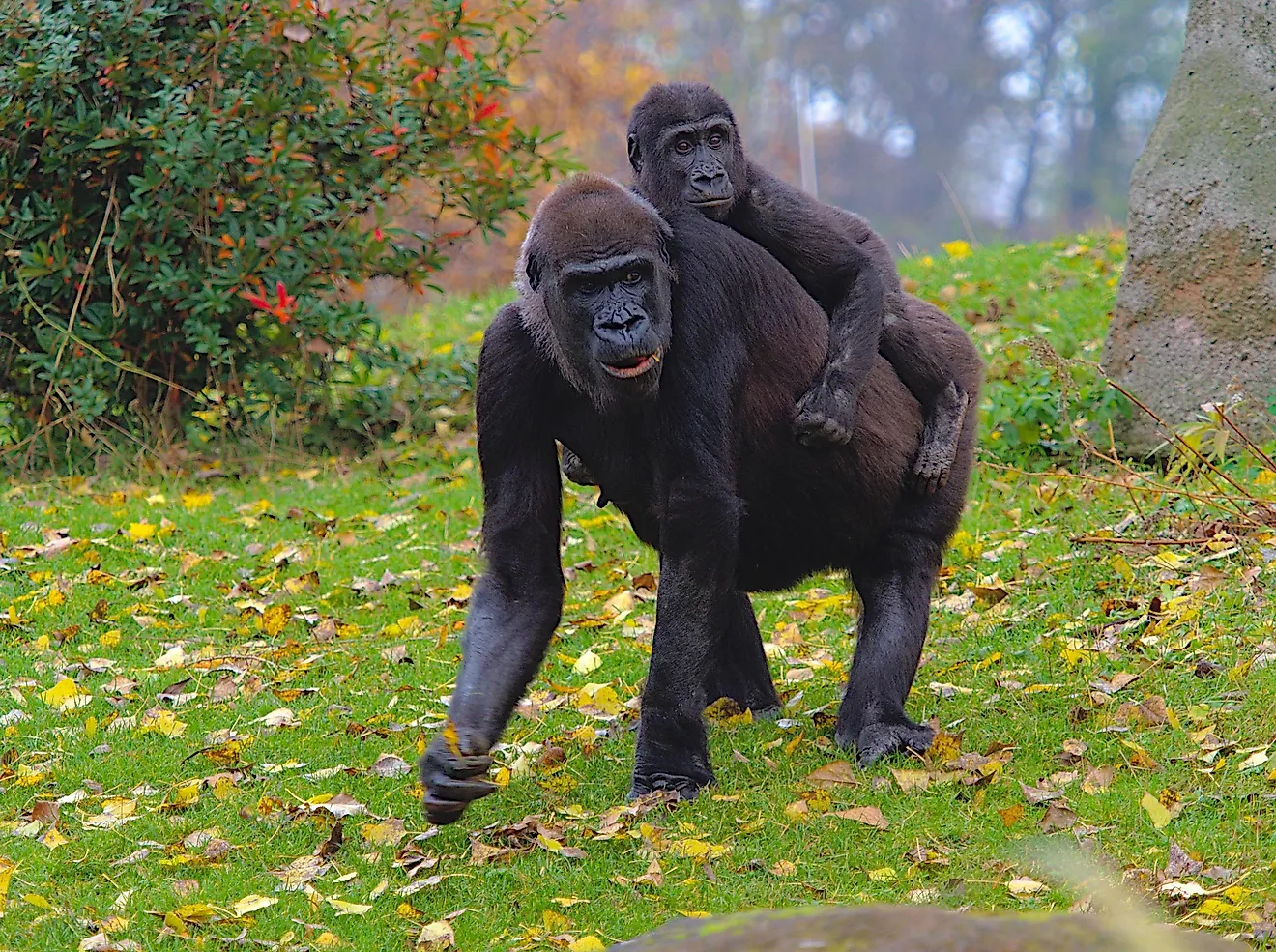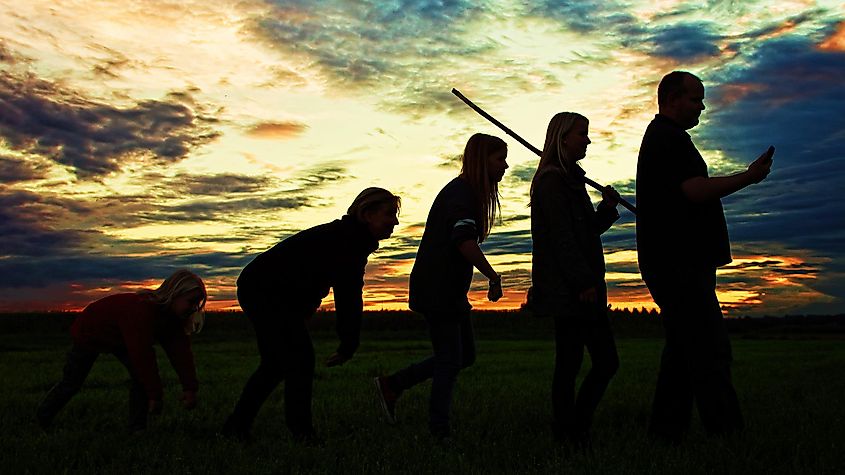Why Do Gorillas Walk On Their Knuckles?

- The body structure of gorillas supports knuckle-walking more than bipedal movement
- Knuckle-walking may have been acquired independently by gorillas as a means of survival
- Gorillas can walk in a biped manner, but only for short distances
- Gorillas walk using their feet and second joints on their fingers
Knuckle-walking is a style of walking found in some primates where they move on all their four limbs. The primates use both their feet and the second finger joints to move around. According to Word Finder, the limbs of the primates force the fingers to a posture that facilitates the bodyweight to be pressed on the ground through the knuckles. It is a peculiar way of moving around that is unique to gorillas, platypuses, chimpanzees, and anteaters. Animals that walk on their knuckles are also known as quadrupeds.
Knuckle-walking In Gorillas
Knuckle-walking has been listed as one characteristic of the ancestry of gorillas. Recent research indicates that the type of walking was acquired from the divergence between gorilla and chimpanzee lineages. The posture observed when gorillas move around includes extended elbows, stiff wrist areas, and posteriorly placed palms. However, unlike chimpanzees, gorillas do not extend their wrists much when walking. The medial joints get slightly flexed as they swing their limbs. When climbing trees, gorillas use all the four limbs to encircle the tree trunk as they support their weight upwards. Climbing is different from walking on the ground where they curl their fingers, as they place the second joint of the fingers on the ground as they shift their weight. As they continue to do this over time, a bony ridge develops under the fingers, and this becomes their way of movement. This form of movement assists gorillas to accomplish specific actions like handling of food and manipulation of objects. Sometimes, gorillas walk bipedally for short distances. This happens whenever they are carrying food or when they need to defend themselves. However, knuckle-walking is their principal mode of locomotion since they do it 94% of their time.
Why Gorillas Knuckle-walk?
Although there has not been a clear explanation as to why gorillas walk on their knuckles, scientific research has indicated several possibilities that would have led to this unusual locomotion behavior. One reason is that gorillas adopted the walking style as a means of reducing the impact their weight had on the soft tissues of their forelimbs. The size and anatomy of the gorilla’s forearm, as well as the unique shape of its torso that is entirely different from other non-knuckle walking apes, could be another reason. Some of the features of the metacarpal and carpal bones on the forelimb may have remodeled over time to facilitate the posture. Other sources indicate that knuckle-walking resulted from an adaptation that is primitive to the chimpanzee and gorilla family. More sources argue that gorillas assumed the locomotive posture through independent acquisition. The reason for this argument is because no other fossil primates have indicated evidence of knuckle-walking.
Anatomy Of Quadrupeds
Gorillas fall among the world’s largest primates. According to the Discover Wildlife magazine, male gorillas weigh between 325 pounds and 373 pounds and can grow up to 5.9 feet tall. Female gorillas weigh half of this. The arm span of a male gorilla can stretch between 7.5 feet and 8.5 feet. Knuckle walkers do so because their wrist bones have different features from bipeds. The wrist bone and radius lock together to create a stable structure that can support the weight of the gorilla as it knuckle-walks. The arms are longer than those of bipeds, and the weight is distributed more on the upper part of their bodies. The hip structure of gorillas is also different from that of human beings. Bipedalism cannot favor gorillas because the structure of their bodies is made for quadrupedal walking.
If human beings had the same bone anatomy as gorillas, they would also become quadrupeds. The back of a gorilla is also not strong enough, and its head does not align with the spine like bipeds. Measuring the strength of gorillas using human terms is impossible because their posture does not allow them to make the same movements and perform the same duties as human beings. Their knuckle-walking is mainly for weight-bearing and stability. Their finger bones are wider and flatter to create a more stable base in their forearm. The end of their radius bone is capped and facing downwards to form a stronger grasp. The skin between the fingers is tough and highly padded to support the adequate movement.

Knuckle-Walking Vs. Human Bipedalism
Walking by knuckles is one evidence that has been used to separate the origin of human beings from that of apes. There has been a consensus that gorillas and human beings originated from the same ancestor. DNA data indicate that human beings might have evolved from knuckle-walking due to morphological integration. The skeletons of the first-ever human beings indicated relations with knuckle-walking primates. Human beings’ bipedal way of movement creates a perfect posture for the hands to remain free for working. However, the anatomy of gorillas leaves the impression that if both share an ancestor, then the knuckle-walking is a habit that gorillas developed independently. Alternatively, the ancestor may have been a knuckle-walker, but human beings lost the knuckle attribute along their evolutionary path.











